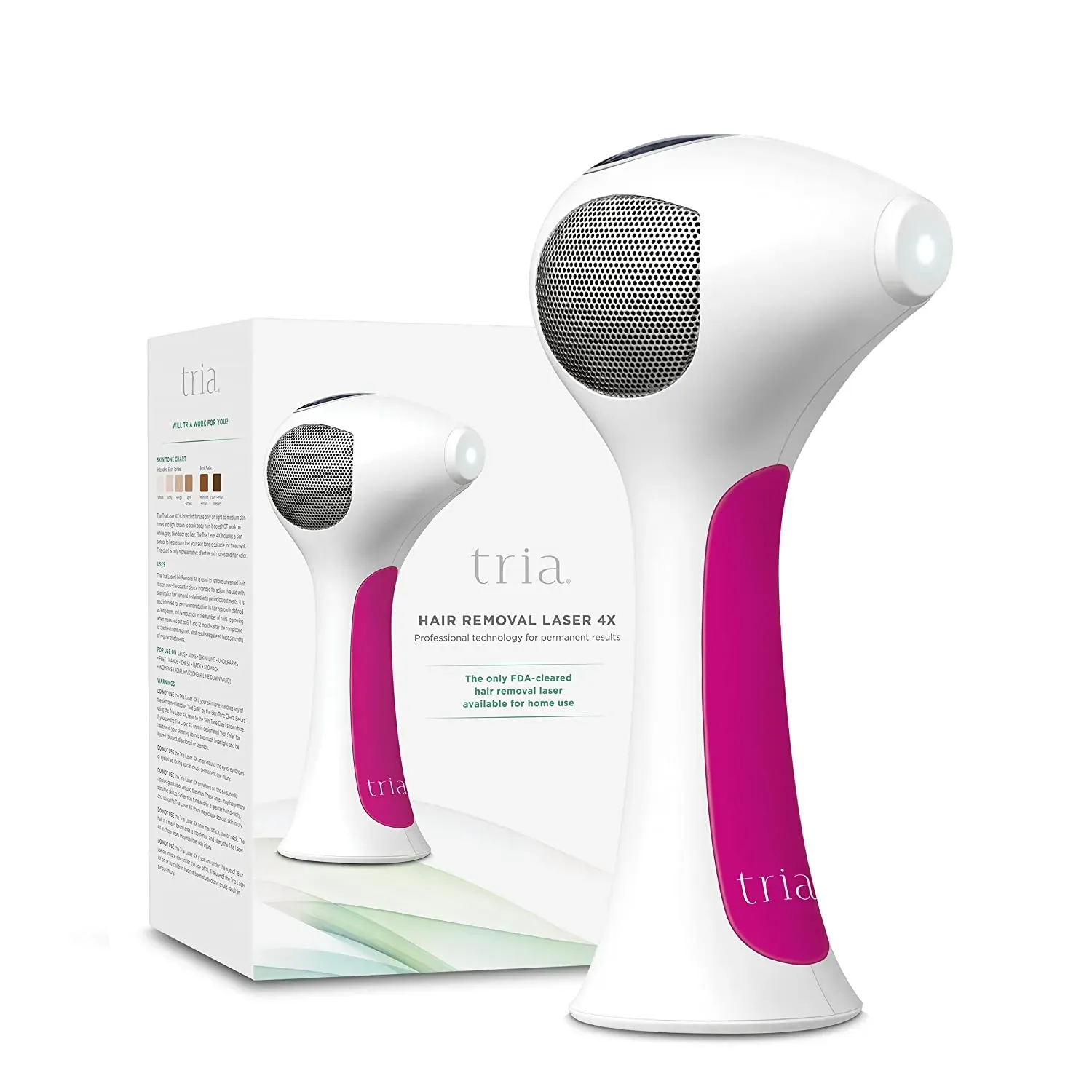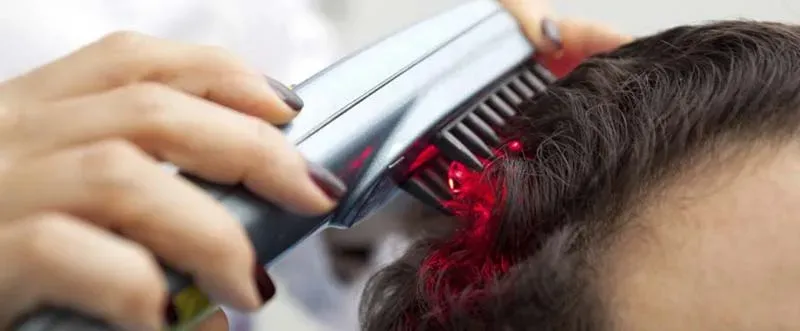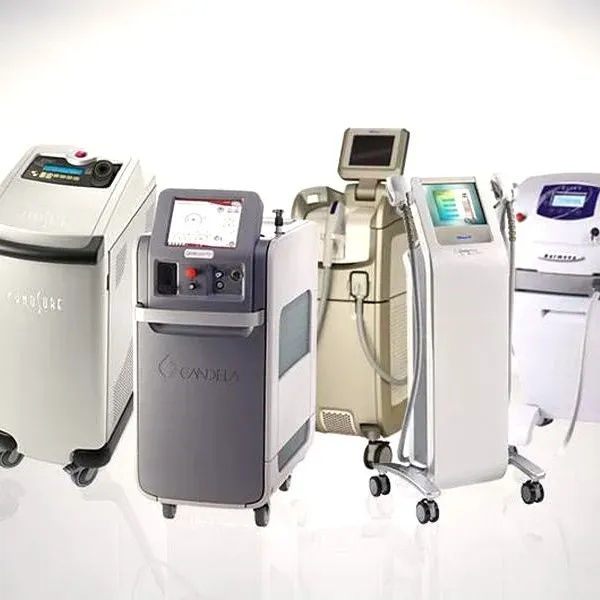Table of Contents
Tired of the endless cycle of shaving, waxing, or plucking? You're not alone. The quest for smooth, hair-free skin often feels like a battle, leaving you wondering if there's a better way. Enter the world of laser hair removal, promising a more permanent solution than your trusty razor or painful wax strips. But with so many options flooding the market, how do you figure out which one is the real deal? Finding the hair removal laser best suited for your specific needs can feel overwhelming, like navigating a dense jungle of technical jargon and marketing hype.
What Makes a Hair Removal Laser Best?

What Makes a Hair Removal Laser Best?
Understanding the Tech Behind It
Alright, so you're dipping your toes into the at-home laser hair removal world. First off, let's talk about what these things actually do. Most at-home devices aren't true medical-grade lasers. They often use Intense Pulsed Light (IPL). Think of IPL not as a single, focused beam like a laser pointer, but more like a flashbulb. It sends out multiple wavelengths of light.
This light gets absorbed by the pigment (melanin) in your hair. The darker the hair, the more light it absorbs. This absorbed light turns into heat, which damages the hair follicle. Damage the follicle enough, and it struggles to grow hair back. Simple enough, right? The trick is hitting the follicle without frying the surrounding skin. That's where the "best" part comes in. A truly effective device manages this balancing act.
Key Specs to Scrutinize
When you're trying to figure out What Makes a Hair Removal Laser Best, you need to look past the shiny packaging and marketing buzzwords. Energy level is a big one. This is often measured in joules per square centimeter (J/cm²). More energy *can* mean better results, but it also means a higher risk of discomfort or skin issues, especially if not used correctly or if your skin tone isn't suitable. It's a delicate balance.
Spot size matters too. This is the area the device covers with each flash. A larger spot size means treatments go faster, which is great for bigger areas like legs. But for smaller, trickier spots like the upper lip, a smaller spot size offers more precision. Then there's the number of flashes the device is rated for. This tells you how long the lamp inside is expected to last. A higher flash count means the device should have a longer lifespan before needing replacement or becoming useless.
- Energy Level (J/cm²)
- Spot Size (cm²)
- Number of Flashes
- Skin Tone Compatibility
- Safety Features (Skin Sensor, Contact Sensor)
- Treatment Modes (e.g., Gentle, Standard)
Safety Features Aren't Optional
Look, zapping yourself with light energy isn't something to take lightly. What Makes a Hair Removal Laser Best absolutely includes robust safety features. A crucial one is a skin tone sensor. These devices are designed to work best on lighter skin tones with darker hair. A good sensor will prevent the device from flashing if your skin is too dark, significantly reducing the risk of burns or hyperpigmentation. It's not foolproof, but it's a vital layer of protection.
Another must-have is a contact sensor. This ensures the device only flashes when it's in full contact with your skin. You don't want accidental flashes going off into your eyes or across the room. While some devices boast cooling features to make treatments more comfortable, these are secondary to the core safety mechanisms that prevent actual harm. Don't compromise on safety for comfort or speed.
Skin Tone and Hair Color: Why It Matters for Hair Removal Laser Best Results

Skin Tone and Hair Color: Why It Matters for Hair Removal Laser Best Results
The Melanin Mismatch: Dark Hair, Light Skin is the Sweet Spot
Look, here's the blunt truth about finding the hair removal laser best for you: it's not a one-size-fits-all situation. The technology, whether it's IPL or a diode laser, works by targeting the pigment – melanin – in your hair follicle. Think of it like a heat-seeking missile for dark stuff. The more melanin in the hair, the better the device can "see" it and heat it up. This is why people with dark hair and lighter skin tones are typically the ideal candidates. Their hair has plenty of pigment to absorb the light, while their skin has less, reducing the risk of the skin absorbing too much energy and getting burned or irritated. It's a scientific reality, not marketing fluff.
Why Darker Skin or Lighter Hair Poses a Challenge
Now, if you have darker skin, the equation changes. Your skin contains more melanin. This means the device's light can be absorbed by your skin just as easily, or even more easily, than by the hair follicle. This significantly increases the risk of adverse effects like burns, blistering, hyperpigmentation (dark spots), or hypopigmentation (light spots). It's a real concern, and frankly, many at-home devices just aren't designed with higher melanin levels in mind. On the flip side, if your hair is light blonde, red, or gray, it has very little melanin. The light simply won't have anything substantial to target, making the treatment ineffective. It's like trying to catch smoke with a net.
Understanding this fundamental principle is crucial before you drop a significant amount of cash on a device. Don't believe marketing that promises universal results. Ask hard questions about skin tone compatibility.
Skin Tone and Hair Color Compatibility Guide (General)
- Ideal: Light Skin, Dark Hair
- Good: Fair Skin, Dark Hair
- Possible (with caution/specific devices): Medium Skin, Dark Hair
- Not Recommended (Most Devices): Dark Skin, Light Hair, Red Hair, Gray Hair
Comparing AtHome Hair Removal Laser Best Options

Comparing AtHome Hair Removal Laser Best Options
Alright, so you've grasped the basics of how these gadgets work and whether your skin and hair are even candidates. Now comes the fun part, or maybe the headache-inducing part: sifting through the sheer volume of devices out there. When you're Comparing AtHome Hair Removal Laser Best Options, you'll quickly see they aren't all created equal. Prices swing wildly, from budget buys that might just be fancy flashlights to premium models that cost as much as a few professional sessions. Look beyond the price tag. Consider the technology – is it IPL or a true diode laser? While both target melanin, diode lasers are often considered more powerful and potentially more effective for suitable candidates, though they might also be pricier and have smaller treatment windows. Check the stated lifespan (number of flashes), the speed of the flashes (how quickly you can move across an area), and any extra bells and whistles like cooling features or different head attachments for specific body areas. It's not just about finding *a* device; it's about finding the one that aligns with your needs, your tolerance for discomfort, and frankly, your budget without falling for marketing fluff.
What features should you really prioritize when looking at different models?
- Is the device IPL or Diode Laser? (Research which is best for your specific needs)
- What is the energy output (J/cm²)?
- How many flashes is it guaranteed for?
- Does it have a skin tone sensor that actually works?
- What is the spot size?
- Are there multiple intensity settings?
- Does it have any cooling features?
Safety First: Using Your Hair Removal Laser Best Device

Safety First: Using Your Hair Removal Laser Best Device
Prep Work Isn't Just for Exams
so you've picked out a device you think might be the hair removal laser best fit for you. Great. But before you start zapping away, let's talk safety. This isn't a race. Skipping the prep steps is like trying to bake a cake without flour – it's just not going to work, and you'll probably make a mess. First, make sure your skin is clean, dry, and free of any lotions, oils, or self-tanner. These can interfere with the light energy or cause irritation. You also need to shave the area you plan to treat. Shaving ensures the light energy focuses on the follicle *under* the skin, not on the hair sitting *on* the skin's surface, which can cause burns.
The absolute non-negotiable first step is the patch test. Every single time you're treating a new area, or even if it's been a while since your last session, do a patch test on a small, inconspicuous spot. Wait 24-48 hours. Check for any excessive redness, blistering, or unusual reaction. A little redness is normal, but anything more than that means the device or the setting might be too intense for your skin. Seriously, don't skip this. Your skin will thank you, and you'll avoid looking like you lost a fight with a sunburned octopus.
Listen to Your Skin (It's Not Lying)
When you're actually using the device, pay attention. These things aren't magic wands you just wave around. Follow the instructions in the manual to the letter. They aren't just suggestions; they're there to keep you from hurting yourself. Start with the lowest intensity setting recommended for your skin tone and hair color, even if you think you're tough. You can always increase it later if your skin tolerates it. Don't overlap pulses excessively. That just means you're hitting the same spot multiple times with too much energy, increasing the risk of burns.
Some areas might be more sensitive than others. Bony areas, places with thinner skin, or spots with denser hair might feel hotter. If it feels genuinely painful, stop. Pain isn't a sign it's "working better"; it's a sign you're potentially damaging your skin. After treatment, avoid direct sun exposure on the treated area. Your skin will be more sensitive to UV rays. Use a broad-spectrum SPF. For soothing, a simple aloe vera gel can help. Resist the urge to pick or scratch at any temporary redness or bumps. Patience and gentle care are key after using what you hope is the hair removal laser best for your needs.
Post-Treatment Care Essentials
- Avoid direct sun exposure on treated areas.
- Apply broad-spectrum SPF daily.
- Use a gentle, soothing product like aloe vera gel.
- Avoid hot baths, saunas, or strenuous exercise immediately after treatment.
- Do not wax or pluck hairs between sessions (shaving is fine).
- Exfoliate gently a few days after treatment to help shed treated hairs.
Beyond the Hype: Realistic Expectations for Hair Removal Laser Best

Beyond the Hype: Realistic Expectations for Hair Removal Laser Best
It's a Marathon, Not a Sprint (And Maybe Not the Finish Line)
let's get real about finding the hair removal laser best device and what it can actually do for you. You've probably seen the ads – smooth legs in a few weeks! While these devices *can* significantly reduce hair growth, they aren't magic erasers. You won't use it once and suddenly be stubble-free forever. Think of it as a process, a commitment. It takes multiple sessions, spread out over weeks or even months, to see noticeable results. Why? Because hair grows in cycles. The light energy is most effective on hairs that are in the active growth phase (anagen), and at any given time, only a percentage of your hair is in that phase. So, you need repeated treatments to catch the hairs as they cycle through. Anyone promising instant, permanent results is selling you snake oil.
Reduction is the Name of the Game, Not Always Elimination
Here’s another dose of reality when considering the hair removal laser best for your situation: it’s officially classified as "permanent hair reduction," not "permanent hair removal." While many people achieve significant, long-lasting results, it doesn't guarantee you'll never see a single hair again. Some follicles might only be damaged, not destroyed, and could produce finer, lighter hairs over time. Hormonal changes later in life can also trigger new hair growth. You might need occasional touch-up sessions down the road to maintain your results. It's about drastically reducing the amount and thickness of hair, making it far less noticeable and manageable. If your expectation is zero hair forever after a few uses, you're setting yourself up for disappointment.
What to Expect (The Realistic Version)
- Noticeable reduction after several weeks/months of consistent treatment.
- Hair that grows back is often finer and lighter.
- Results vary greatly depending on skin tone, hair color, and device used.
- Requires ongoing commitment to treatment schedule.
- May need occasional touch-up sessions in the future.
- Not effective on light blonde, red, or gray hair.
- Not suitable for all skin tones, especially darker ones.
Making Your Pick: The Reality of Hair Removal Laser Best
So, you've navigated the jungle of at-home options, considered your skin and hair, and perhaps even done a patch test. Finding the hair removal laser best for you isn't about chasing perfection overnight; it's about making a calculated decision based on realistic expectations and consistent effort. These devices offer a path toward reduced hair growth, but they demand patience and adherence to instructions. Don't expect miracles after one session, and be prepared for the possibility that results may vary. Ultimately, the "best" device is the one that aligns with your specific needs and that you commit to using properly over time, not just the one with the flashiest marketing.
